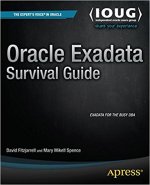"Sometimes I find the best way of getting from one place to another is simply to erase everything and begin again."
-- Norton Juster, The Phantom Tollbooth
In one of the Oracle forums a question was asked regarding revoking selected privileges from the DBA role. Unfortunately for the person posting the question the answer is a resounding “No”; granting a role grants all privileges assigned to that role and there is no “picking and choosing” as if you were in a cafeteria. Roles are designed (or should be, at least) to grant all necessary privileges a user would need to access objects that role will use. And roles supplied by Oracle are designed for the jobs they are named after, such as DBA. Changing the role affects functionality and can seriously impact those granted that role. Let’s look at that in a bit more detail.
Oracle provides pre-configured roles with every installation of the database, and the list can vary based on the options you choose to install. A partial list of these roles from 12.1.0.2 is shown below (remember this is not a complete and exhaustive list):
ROLE O
------------------------------ -
CONNECT Y
RESOURCE Y
DBA Y
AUDIT_ADMIN Y
AUDIT_VIEWER Y
SELECT_CATALOG_ROLE Y
EXECUTE_CATALOG_ROLE Y
DELETE_CATALOG_ROLE Y
CAPTURE_ADMIN Y
EXP_FULL_DATABASE Y
IMP_FULL_DATABASE Y
CDB_DBA Y
PDB_DBA Y
RECOVERY_CATALOG_OWNER Y
LOGSTDBY_ADMINISTRATOR Y
DBFS_ROLE Y
GSMUSER_ROLE Y
AQ_ADMINISTRATOR_ROLE Y
AQ_USER_ROLE Y
DATAPUMP_EXP_FULL_DATABASE Y
DATAPUMP_IMP_FULL_DATABASE Y
ADM_PARALLEL_EXECUTE_TASK Y
PROVISIONER Y
XS_RESOURCE Y
XS_SESSION_ADMIN Y
XS_NAMESPACE_ADMIN Y
XS_CACHE_ADMIN Y
GATHER_SYSTEM_STATISTICS Y
OPTIMIZER_PROCESSING_RATE Y
GSMADMIN_ROLE Y
RECOVERY_CATALOG_USER Y
EM_EXPRESS_BASIC Y
EM_EXPRESS_ALL Y
SCHEDULER_ADMIN Y
HS_ADMIN_SELECT_ROLE Y
HS_ADMIN_EXECUTE_ROLE Y
HS_ADMIN_ROLE Y
GLOBAL_AQ_USER_ROLE Y
OEM_ADVISOR Y
OEM_MONITOR Y
XDBADMIN Y
XDB_SET_INVOKER Y
AUTHENTICATEDUSER Y
XDB_WEBSERVICES Y
XDB_WEBSERVICES_WITH_PUBLIC Y
XDB_WEBSERVICES_OVER_HTTP Y
GSM_POOLADMIN_ROLE Y
GDS_CATALOG_SELECT Y
WM_ADMIN_ROLE Y
JAVAUSERPRIV Y
JAVAIDPRIV Y
JAVASYSPRIV Y
JAVADEBUGPRIV Y
EJBCLIENT Y
JMXSERVER Y
JAVA_ADMIN Y
JAVA_DEPLOY Y
CTXAPP Y
ORDADMIN Y
OLAP_XS_ADMIN Y
OLAP_DBA Y
OLAP_USER Y
SPATIAL_WFS_ADMIN Y
WFS_USR_ROLE Y
SPATIAL_CSW_ADMIN Y
CSW_USR_ROLE Y
LBAC_DBA Y
APEX_ADMINISTRATOR_ROLE Y
APEX_GRANTS_FOR_NEW_USERS_ROLE Y
DV_SECANALYST Y
DV_MONITOR Y
DV_ADMIN Y
DV_OWNER Y
DV_ACCTMGR Y
DV_PUBLIC Y
DV_PATCH_ADMIN Y
DV_STREAMS_ADMIN Y
DV_GOLDENGATE_ADMIN Y
DV_XSTREAM_ADMIN Y
DV_GOLDENGATE_REDO_ACCESS Y
DV_AUDIT_CLEANUP Y
DV_DATAPUMP_NETWORK_LINK Y
DV_REALM_RESOURCE Y
DV_REALM_OWNER Y
The ‘O’ header is for the ORACLE_MAINTAINED column which indicates the role is supplied by Oracle. [This is a new column in the DBA_ROLES view for 12.1; earlier releases do not have this column in the view definition.] That list has 84 different roles all created when your database was created. What privileges do these roles have? That’s a question answered by the ROLE_SYS_PRIVS and ROLE_TAB_PRIVS views; let’s look at the DBA role and see what Oracle deems as necessary system privileges to be an effective DBA:
PRIVILEGE
----------------------------------------
CREATE SESSION
ALTER SESSION
DROP TABLESPACE
BECOME USER
DROP ROLLBACK SEGMENT
SELECT ANY TABLE
INSERT ANY TABLE
UPDATE ANY TABLE
DROP ANY INDEX
SELECT ANY SEQUENCE
CREATE ROLE
EXECUTE ANY PROCEDURE
ALTER PROFILE
CREATE ANY DIRECTORY
CREATE ANY LIBRARY
EXECUTE ANY LIBRARY
ALTER ANY INDEXTYPE
DROP ANY INDEXTYPE
DEQUEUE ANY QUEUE
EXECUTE ANY EVALUATION CONTEXT
EXPORT FULL DATABASE
CREATE RULE
ALTER ANY SQL PROFILE
ADMINISTER ANY SQL TUNING SET
CHANGE NOTIFICATION
DROP ANY EDITION
DROP ANY MINING MODEL
ALTER ANY MINING MODEL
ALTER ANY CUBE DIMENSION
CREATE CUBE
DROP ANY CUBE BUILD PROCESS
USE ANY SQL TRANSLATION PROFILE
CREATE PLUGGABLE DATABASE
ALTER ROLLBACK SEGMENT
DELETE ANY TABLE
ALTER DATABASE
FORCE ANY TRANSACTION
ALTER ANY PROCEDURE
DROP ANY TRIGGER
DROP ANY MATERIALIZED VIEW
UNDER ANY TYPE
ALTER ANY LIBRARY
CREATE DIMENSION
DEBUG ANY PROCEDURE
CREATE RULE SET
ALTER ANY RULE SET
ANALYZE ANY DICTIONARY
ALTER ANY EDITION
CREATE ANY ASSEMBLY
ALTER ANY CUBE
SELECT ANY CUBE
DROP ANY MEASURE FOLDER
RESTRICTED SESSION
CREATE TABLESPACE
ALTER TABLESPACE
CREATE USER
ALTER USER
LOCK ANY TABLE
CREATE VIEW
DROP ANY VIEW
GRANT ANY ROLE
CREATE TRIGGER
CREATE TYPE
EXECUTE ANY OPERATOR
CREATE ANY DIMENSION
ALTER ANY DIMENSION
CREATE ANY OUTLINE
ADMINISTER DATABASE TRIGGER
RESUMABLE
FLASHBACK ANY TABLE
CREATE ANY RULE SET
EXECUTE ANY RULE SET
IMPORT FULL DATABASE
EXECUTE ANY RULE
EXECUTE ANY PROGRAM
CREATE ANY EDITION
CREATE ASSEMBLY
ALTER ANY ASSEMBLY
CREATE CUBE DIMENSION
CREATE ANY CUBE BUILD PROCESS
UPDATE ANY CUBE DIMENSION
EM EXPRESS CONNECT
SET CONTAINER
ALTER ANY MEASURE FOLDER
CREATE ANY TABLE
CREATE ANY INDEX
CREATE ANY SEQUENCE
ALTER ANY ROLE
ANALYZE ANY
DROP ANY LIBRARY
CREATE ANY OPERATOR
CREATE INDEXTYPE
UNDER ANY TABLE
DROP ANY DIMENSION
SELECT ANY DICTIONARY
GRANT ANY OBJECT PRIVILEGE
CREATE EVALUATION CONTEXT
CREATE ANY EVALUATION CONTEXT
DROP ANY EVALUATION CONTEXT
CREATE ANY RULE
CREATE JOB
CREATE ANY JOB
CREATE MINING MODEL
INSERT ANY CUBE DIMENSION
DROP ANY CUBE
UPDATE ANY CUBE BUILD PROCESS
EXEMPT DML REDACTION POLICY
READ ANY TABLE
ALTER SYSTEM
AUDIT SYSTEM
CREATE ROLLBACK SEGMENT
DROP ANY TABLE
COMMENT ANY TABLE
REDEFINE ANY TABLE
CREATE CLUSTER
ALTER ANY INDEX
DROP PUBLIC DATABASE LINK
CREATE PROFILE
ALTER ANY MATERIALIZED VIEW
ALTER ANY TYPE
DROP ANY TYPE
UNDER ANY VIEW
EXECUTE ANY INDEXTYPE
DROP ANY CONTEXT
ALTER ANY OUTLINE
ADMINISTER RESOURCE MANAGER
MANAGE SCHEDULER
MANAGE FILE GROUP
CREATE ANY MINING MODEL
SELECT ANY MINING MODEL
CREATE ANY MEASURE FOLDER
DELETE ANY MEASURE FOLDER
CREATE ANY SQL TRANSLATION PROFILE
CREATE ANY CREDENTIAL
EXEMPT DDL REDACTION POLICY
SELECT ANY MEASURE FOLDER
SELECT ANY CUBE BUILD PROCESS
ALTER ANY CUBE BUILD PROCESS
CREATE TABLE
BACKUP ANY TABLE
CREATE ANY CLUSTER
DROP ANY SYNONYM
DROP PUBLIC SYNONYM
CREATE ANY VIEW
CREATE SEQUENCE
ALTER ANY SEQUENCE
FORCE TRANSACTION
CREATE PROCEDURE
CREATE ANY PROCEDURE
ALTER RESOURCE COST
DROP ANY DIRECTORY
CREATE ANY TYPE
ALTER ANY OPERATOR
CREATE ANY INDEXTYPE
ENQUEUE ANY QUEUE
ON COMMIT REFRESH
DEBUG CONNECT SESSION
DROP ANY RULE SET
EXECUTE ANY CLASS
MANAGE ANY FILE GROUP
EXECUTE ANY ASSEMBLY
EXECUTE ASSEMBLY
COMMENT ANY MINING MODEL
CREATE ANY CUBE DIMENSION
DELETE ANY CUBE DIMENSION
SELECT ANY CUBE DIMENSION
DROP ANY SQL TRANSLATION PROFILE
CREATE CREDENTIAL
ALTER ANY TABLE
DROP ANY CLUSTER
CREATE SYNONYM
CREATE PUBLIC SYNONYM
DROP ANY SEQUENCE
DROP ANY ROLE
AUDIT ANY
DROP ANY PROCEDURE
CREATE ANY TRIGGER
ALTER ANY TRIGGER
DROP PROFILE
GRANT ANY PRIVILEGE
CREATE LIBRARY
CREATE OPERATOR
DROP ANY OUTLINE
MERGE ANY VIEW
ADMINISTER SQL TUNING SET
UPDATE ANY CUBE
INSERT ANY MEASURE FOLDER
ADMINISTER SQL MANAGEMENT OBJECT
CREATE SQL TRANSLATION PROFILE
LOGMINING
MANAGE TABLESPACE
DROP USER
ALTER ANY CLUSTER
CREATE ANY SYNONYM
CREATE DATABASE LINK
CREATE PUBLIC DATABASE LINK
CREATE MATERIALIZED VIEW
CREATE ANY MATERIALIZED VIEW
EXECUTE ANY TYPE
DROP ANY OPERATOR
QUERY REWRITE
GLOBAL QUERY REWRITE
MANAGE ANY QUEUE
CREATE ANY CONTEXT
ALTER ANY EVALUATION CONTEXT
ALTER ANY RULE
DROP ANY RULE
ADVISOR
SELECT ANY TRANSACTION
DROP ANY SQL PROFILE
CREATE ANY SQL PROFILE
READ ANY FILE GROUP
CREATE EXTERNAL JOB
DROP ANY ASSEMBLY
DROP ANY CUBE DIMENSION
CREATE ANY CUBE
CREATE MEASURE FOLDER
CREATE CUBE BUILD PROCESS
ALTER ANY SQL TRANSLATION PROFILE
FLASHBACK ARCHIVE ADMINISTER
220 system privileges are required to be an effective DBA for an Oracle database, an impressive list, indeed. Of course once a user is granted the DBA role he or she gets ALL of those system privileges and since the role is the only direct grant that gives those privileges that list cannot be modified by selectively revoking one or more of those privileges:
SQL> grant DBA to blorpo identified by gussyflorp;
Grant succeeded.
SQL> revoke select any transaction from blorpo;
revoke select any transaction from blorpo
*
ERROR at line 1:
ORA-01952: system privileges not granted to 'BLORPO'
SQL>
Yes, the user DOES have that privilege, albeit indirectly. It’s indirect because it’s the ROLE that was granted that privilege, among others, and no attempt was made to revoke the role from the user. It’s a ‘package deal’; you grant a role to a user and it’s all or nothing, and even though it behaves like the user has the privileges granted directly that’s not the case.
You could, of course, get all of the privileges the DBA role has (both system and table) and create a script to grant each individual privilege to the desired user. It would be a LONG script and such grants require attention from the DBA granting them to ensure they are both current and not being abused. In that case individual privileges can be revoked which would be a maintenance nightmare for the DBA having keep track of which user has which set of privileges. Another option presents itself, creating a new role with only the privileges the DBA wants to assign to a user. The privilege list for DBA could be shortened to create, say, a DB_OPERATOR or DBO role. Such privileges would depend upon the job description; creating such a role would make granting such access easier and make maintenance simpler since when the role grants are changed those who are granted that role have there privileges adjusted the next time they login.
Roles make granting privileges very easy and straightforward, provided the role is properly created and maintained. Roles also make it impossible to “pick and choose” privileges a user should have. It’s an “all or nothing” proposition and there’s no way around that when using a pre-defined role.
Sometimes you just need to begin again.


